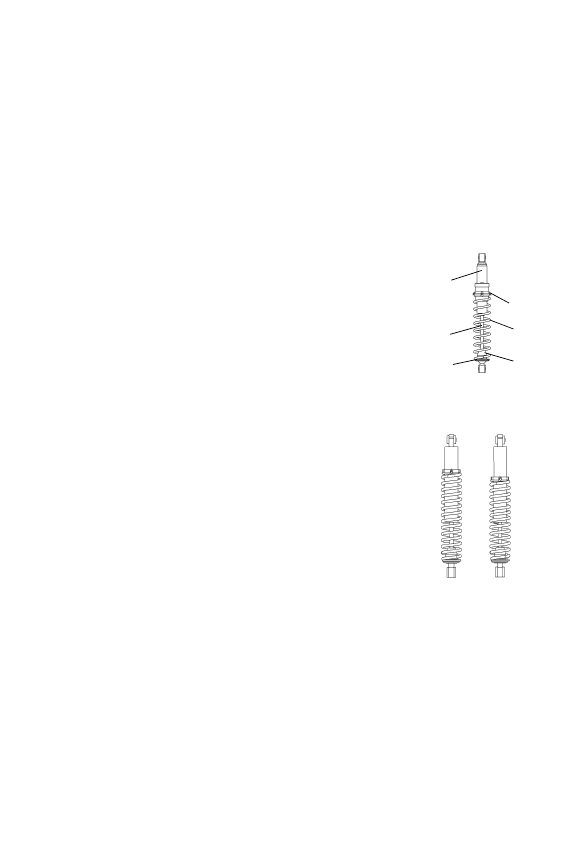Snowmobile Polaris RMK Shift / RMK / Dragon RMK (2008 year). Manual - part 10

41
THE PERFECT FIT
IQ Front Suspension Adjustments
Standard Shocks
The tension at which the shock coil spring is set is called spring preload.
For the best ride, the suspension should be adjusted to use the full travel
of the shocks with occasional light bottoming. To determine if your
machine is using full travel, push the jounce bumper down on the shock
rod until it contacts the body and test ride the machine. The bumper will
move up on the rod in relation to the amount of travel that was used dur-
ing the ride. If the travel is full, the bumper will be seated at the top of
the rod.
Shock Absorber Components
1.
Retainer
2.
Jounce Bumper
3.
Shock Rod
4.
Body
5.
Threaded Spring Preload Adjuster Nut
6.
Spring
Front Shock Spring Preload
(RMK Standard Only)
Increasing spring preload will increase ski-to-ground
pressure. Decreasing spring preload will decrease ski-
to-ground pressure. When adjusting, be sure the
springs on both the left and right sides of the machine
are at the same adjustment.
To increase front shock spring preload, grasp the
spring and turn it to the left. Turn it to the right to
decrease preload.
Increasing the spring preload too much may adversely
affect the handling of the snowmobile and the perfor-
mance of the suspension. Never exceed one inch of preload beyond the
factory settings, and ensure that both sides are adjusted the same. When
decreasing preload, make sure at least two turns of preload are holding
the spring between the retainer on top of the shock and the threaded
spring preload adjuster nut on the shock body.
Front Shock Springs
(Standard only)
The front springs can be changed if spring preload alone isn't sufficient
and further adjustment is desired to control suspension stiffness. See
your Polaris dealer for more information.
1
2
3
5
4
6
Low
Preload
High
Preload